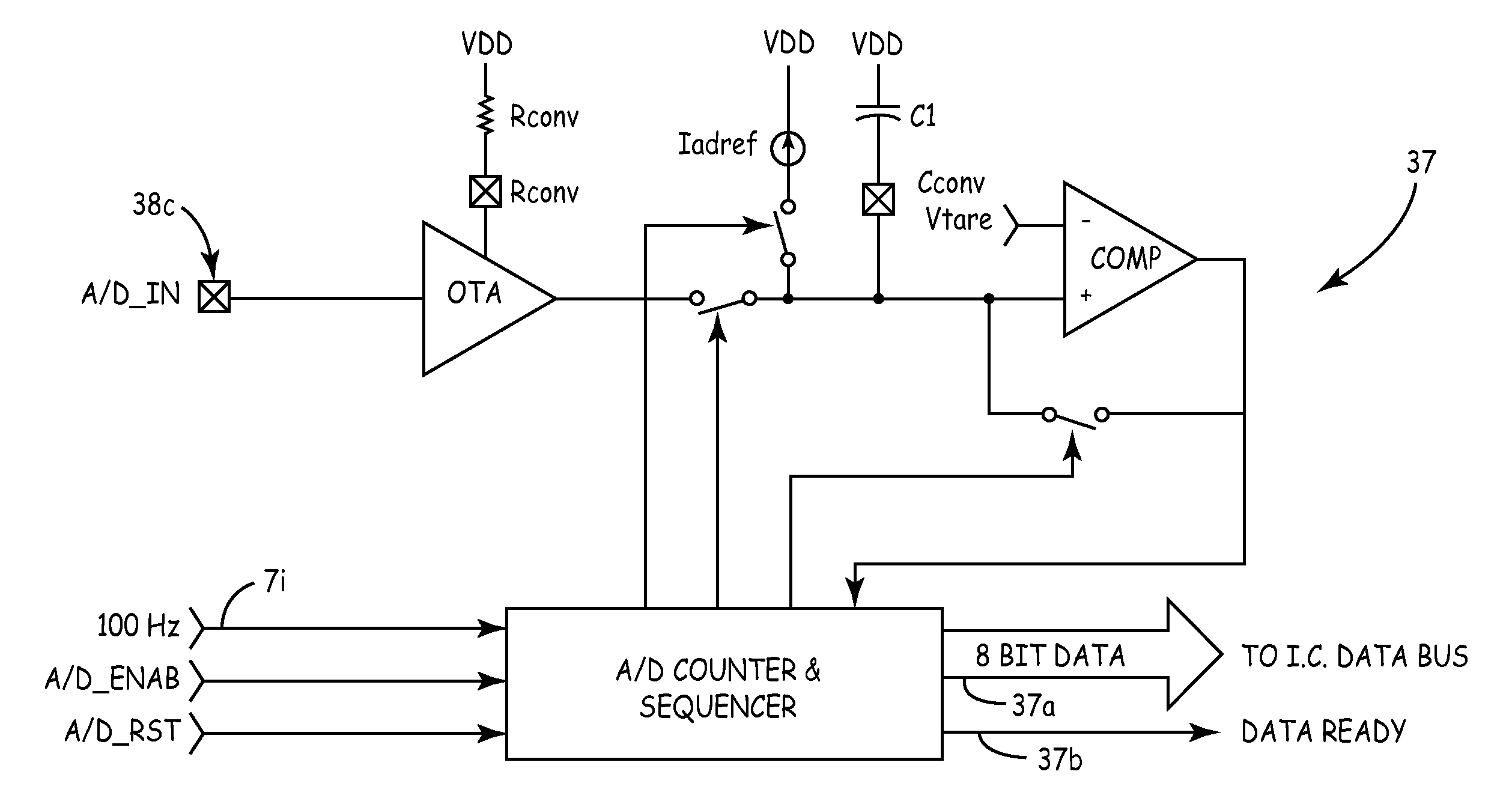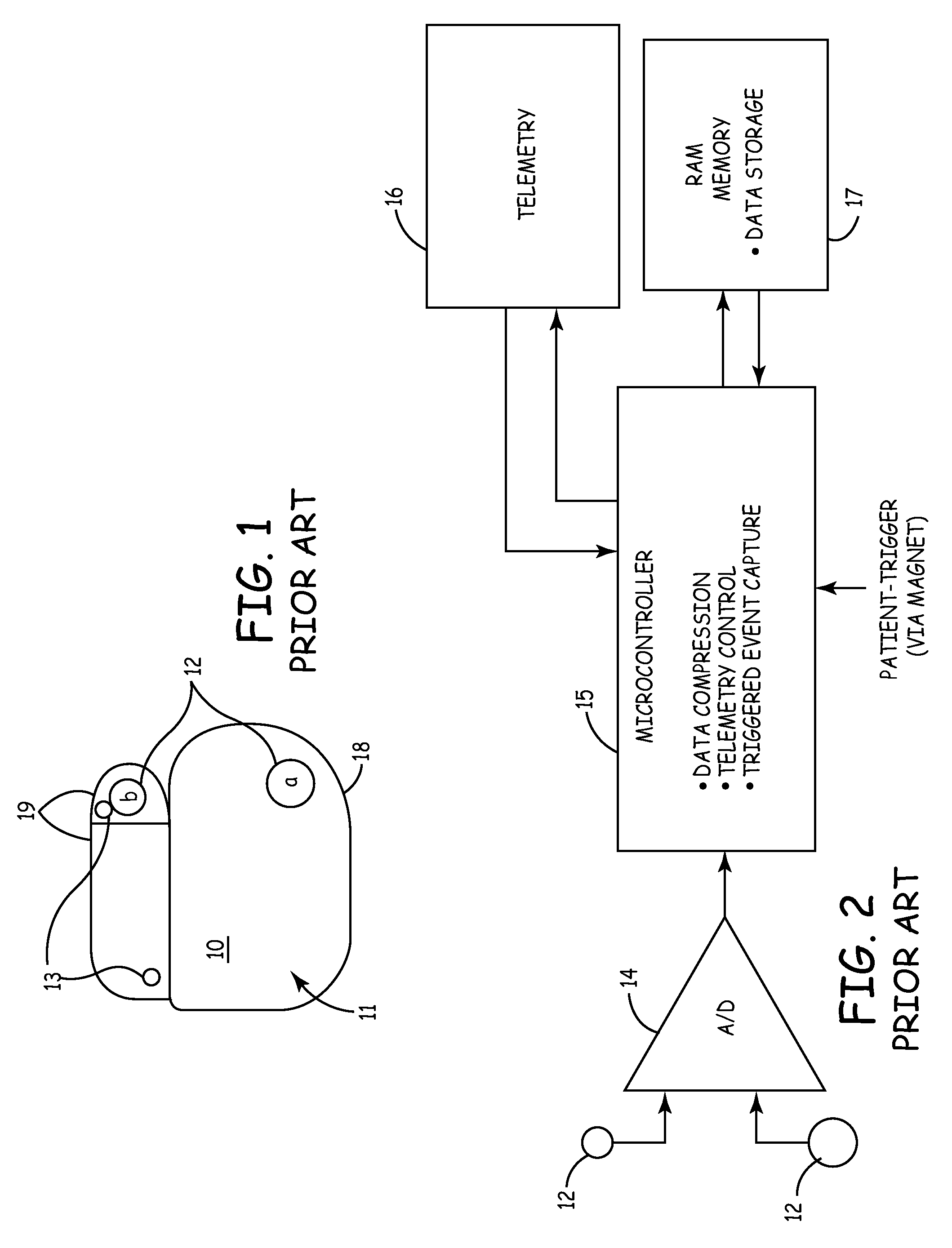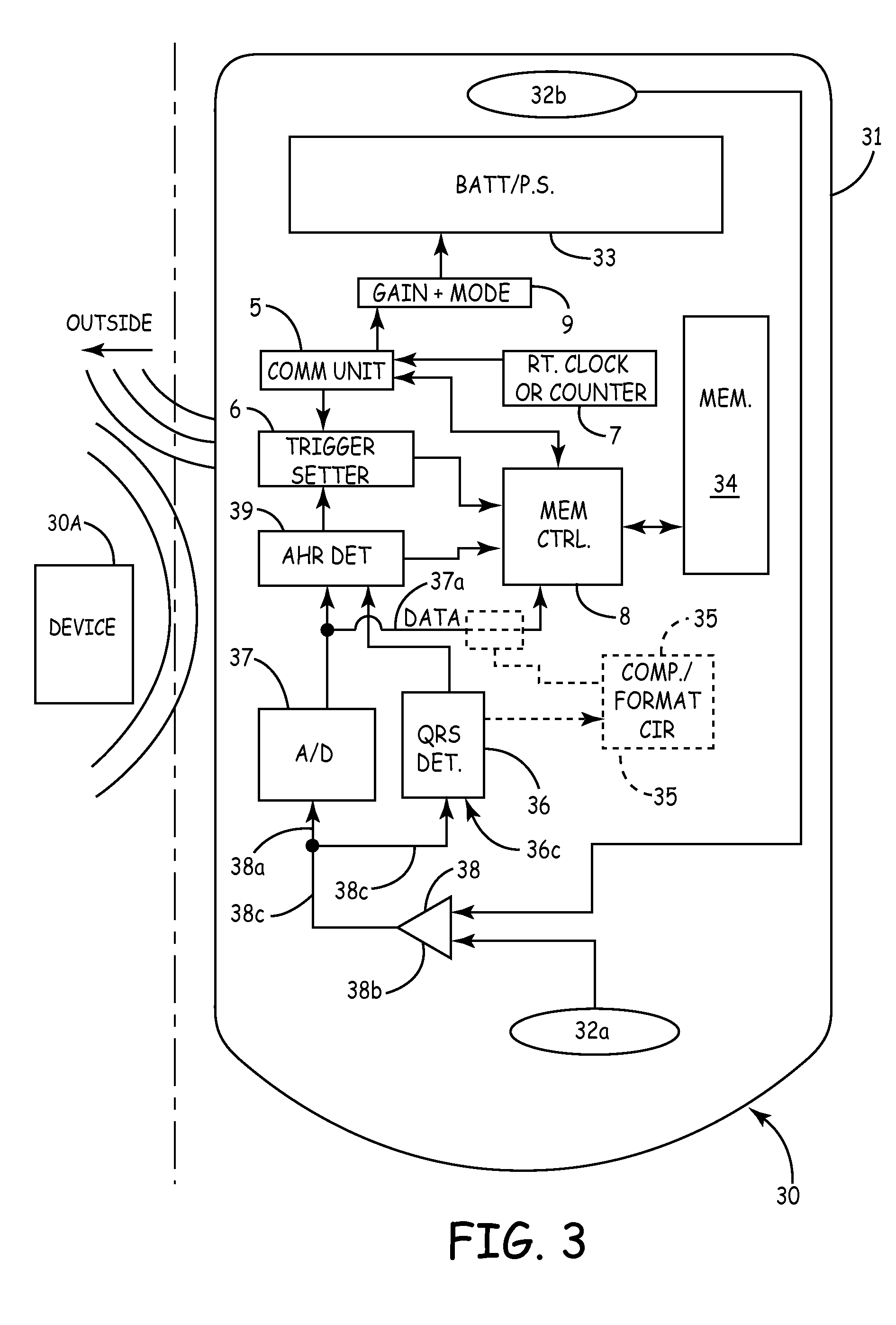Implantable medical device with patient input mechanism
a medical device and patient technology, applied in the field of implantable medical devices, can solve the problems of difficult diagnosis of cardiac arrhythmias, short duration and sudden onset of cardiac arrhythmias, and very infrequent events
- Summary
- Abstract
- Description
- Claims
- Application Information
AI Technical Summary
Problems solved by technology
Method used
Image
Examples
Embodiment Construction
[0016]With reference to FIG. 1 a device 10 is provided with two suture holes 13 and two spaced apart non-lead or leadless electrodes 12 at one and one-quarter inches distance center to center. The device 10 includes a coating 11 so that the only area of exposure on the body of a pacer can 19 is the exposed area at the electrode 12a. The other electrode is a metal plug electrode 12b mounted in a connector block 19.
[0017]In FIG. 2 the same electrodes 12 supplied signals into the circuitry inside the housing or “can”18 (FIG. 1) by first entering a analog to digital conversion and amplifier circuit 14. Data from this circuit 14 was fed to a microcontroller 15 which provided functions of data compression, telemetry control and event capture triggered by patient operation. Telemetry block 16 and RAM memory storage 17 were also provided in this device.
[0018]Referring to FIG. 3, a circuit model 30 is illustrated in an outline of an implantable device shell 31. Electrodes 32a and 32b bring s...
PUM
 Login to View More
Login to View More Abstract
Description
Claims
Application Information
 Login to View More
Login to View More - R&D
- Intellectual Property
- Life Sciences
- Materials
- Tech Scout
- Unparalleled Data Quality
- Higher Quality Content
- 60% Fewer Hallucinations
Browse by: Latest US Patents, China's latest patents, Technical Efficacy Thesaurus, Application Domain, Technology Topic, Popular Technical Reports.
© 2025 PatSnap. All rights reserved.Legal|Privacy policy|Modern Slavery Act Transparency Statement|Sitemap|About US| Contact US: help@patsnap.com



